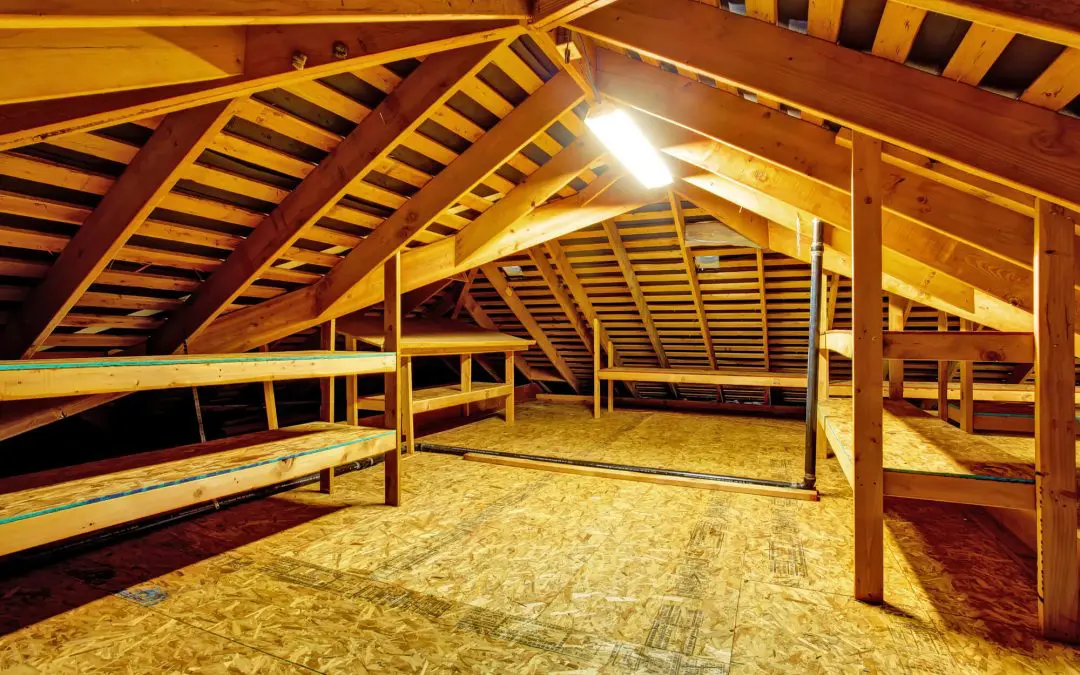Countless homeowners struggle with properly utilizing their attic area for storage. If used correctly, the attic is a great option for storage space. This blog post will cover the best practices for attic storage to keep your items safe, accessible, and well-organized.
Assessing Your Attic Space
Before you begin moving items into your attic, assess the space. Check the structural integrity of the flooring to confirm it will support the weight of the items you plan to store. Inspect for signs of leaks, pests, or damage. Proper ventilation and insulation are vital to maintaining a stable environment that protects your belongings from extreme temperatures and humidity.
Planning Your Attic Storage Layout
A well-thought-out layout is the backbone of adequate attic storage. Start by categorizing your items: seasonal decorations, old clothes, family heirlooms, etc. Once categorized, map out zones in your attic for each category. This approach will make finding items easier and distribute weight evenly across the space. Place frequently used items near the entrance for easy access and less used items further back.
Choosing the Right Storage Containers
Selecting the appropriate storage containers will help protect your items. Opt for clear plastic bins with tight-fitting lids to keep out dust and pests. These bins are stackable and allow you to see the contents without opening them. For items that need to breathe, such as vintage clothing, use acid-free storage boxes. Label each container clearly to save time and effort when searching for specific items later.
Maximizing Vertical Space for Attic Storage
Don’t overlook the vertical space in your attic. Installing sturdy shelving units along the walls will significantly increase your storage capacity. Use these shelves for lighter items to prevent overloading. Use hanging storage solutions like pegboards or hooks for items like tools, sports equipment, or holiday decorations. Utilizing vertical space efficiently keeps the floor area clear and maintains organization.
Protecting Your Belongings
Attics can experience extreme temperature fluctuations, causing damage to certain items. Protect your belongings using insulation and a vapor barrier to control moisture. Avoid storing sensitive items such as electronics, photographs, or important documents in the attic unless you take additional precautions. For items prone to damage, use desiccants to absorb moisture and protect them from humidity.
Maintaining Accessibility
Accessibility is often a challenge in attic storage. Create a clear pathway from the entrance to the farthest corner of the attic. This pathway will allow you to reach items without moving multiple boxes or containers. Regularly review and declutter your attic to maintain order and accessibility.
Safety Considerations
Safety should be a top priority when organizing your attic. Ensure the flooring is stable and supports the weight of the stored items and anyone moving around. Install adequate lighting to prevent accidents and make it easier to find items. If your attic has pull-down stairs or a ladder, ensure it is in good condition and secure. Always use proper lifting techniques to avoid injury, especially when handling heavy or awkwardly shaped items.
By following these tips and best practices, you’ll transform your attic into a well-organized and functional storage space. Proper planning, suitable materials, and regular maintenance are key to keeping your stored items safe and accessible.
Attic Storage FAQs
What should I do if my attic is prone to pests?
If your attic is susceptible to pests, take preventative measures such as sealing gaps or cracks where pests might enter. Use pest-proof storage containers and avoid storing items directly on the floor. Regularly inspect the attic for signs of pests and use natural repellents or professional pest control services if necessary. Keep the area clean and free of food or organic materials that attract pests.
How often should I check on the items stored in my attic?
It’s a good idea to check on your attic storage at least twice a year, preferably during the spring and fall. This allows you to assess potential issues and update your organization system as needed.
Is it safe to store furniture in the attic?
Yes, as long as the attic is dry and well-ventilated, and the flooring can support the weight. Use furniture covers to protect against dust and potential moisture damage.
Jones & Cooper Home Inspections provides inspections to homebuyers and sellers in the Metro Louisville area. Contact us to schedule our services.

